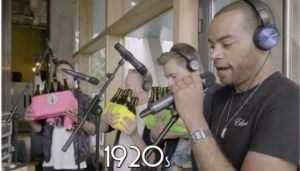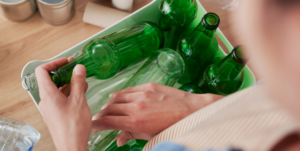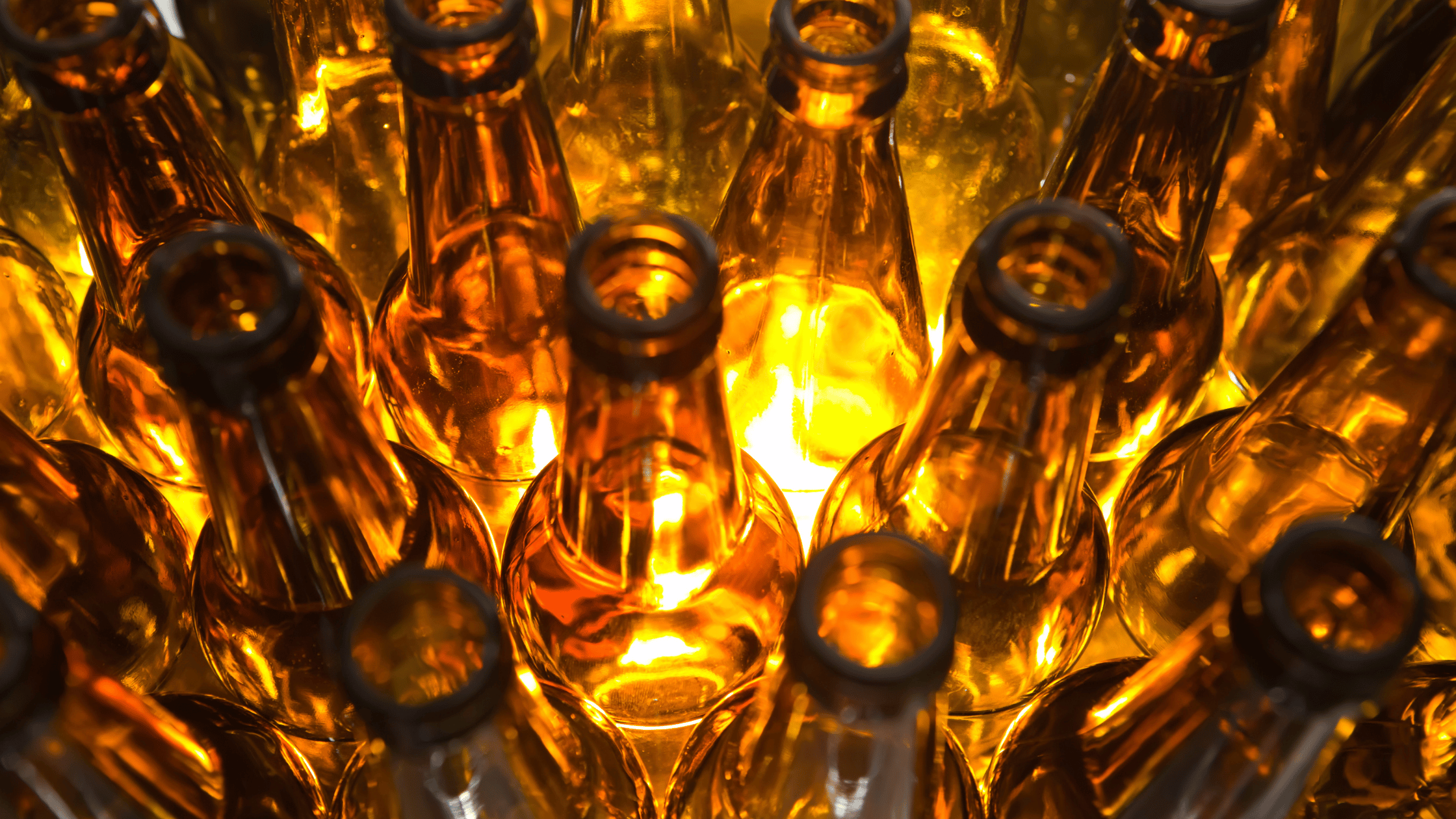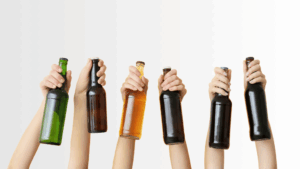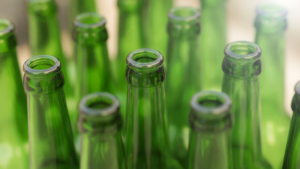The truth is, it does make a difference – a big one. Beer’s flavour begins to change the moment it’s packaged, meaning the journey that each one takes from brewery to buff can have a major impact on the tasting experience. Since most of us can’t drink beer straight from the source (or rather the tank), packaging is essential — not only for transport, but also to protect your brew’s flavour and quality. The end goal of storing beer in bottles and cans? Ensuring that we get to experience the brew as closely as possible to how its creators intended.
In this article, we’ll explore everything you need to know about beer packaging and tackle the eternal dilemma of beer in bottles vs. cans.
The history of beer: from ancient brews to modern flavours
Beer is one of the oldest drinks that humans have produced, and its story goes way back to Ancient China. Research shows that during the Xia Dynasty (2070-1600 BCE), people made beer at a small scale using grains like millet and barley — mostly for use in religious rituals and medical practices.
A more recent discovery, dating back to 7000 BCE, found traces of a specific beer type made from rice, fungi and a plant part called a ‘tuber’. Scientists believed this was part of a burial ceremony, given the abnormally lengthy brewing process.
But beer wasn’t just used for rituals, it was also a staple of wealth and status among the Ancient Chinese society. Brewed using diverse vessels to adjust its flavour, and served during banquets and feasts, beer was as a display of family’s abundance to everyone attending.
Today, much like glass, beer making history has seen many changes, and the formula of the drink has been tweaked countless times as people’s taste evolves. But one thing remains undeniable: it’s popularity. – that’s more than 65,000 Olympic-sized swimming pools (and that doesn’t include independent microbreweries and home brewers). – that’s more than 461 billion cans of beer, or 65,000 Olympic-sized swimming pools (and that doesn’t include independent microbreweries and home brewers).
The first beer in glass
Beer bottles vs. cans: which one is better?
Taste and Quality
When it comes to the taste of beer in bottles vs cans, glass packaging is the clear winner.
First, glass is naturally leak-proof, meaning it doesn’t need any additional lining to keep your brew fresh and properly sealed. Cans, on the other hand, rely on a special plastic coating, which could leak chemicals into the beer and compromises its flavour – even after pouring.
Some people also notice a ‘tinny’ taste in cans, because of the metallic note of the aluminium. This can subtly affect the flavour of the brew and its aroma, especially as your nose gets close to the can while you’re sipping.
Compared to cans, the thickness of glass also does a better job at protecting your beer from oxygenation and developing a stale or cardboard-like taste.

Environment and Circularity
One of the main qualities of glass, compared to other materials, is that it can be safely recycled and reused.
Glass containers can be remelted into new products endless times without losing their quality in the process. This makes recycled glass a key ingredient in producing new containers — saving energy and other natural resources.
A key difference between bottles and cans also lies in their composition. Unlike cans, bottles don’t require any additional plastic linings, meaning they don’t release harmful chemicals into the environment, nor do they break down into small particles that could affect your drink.
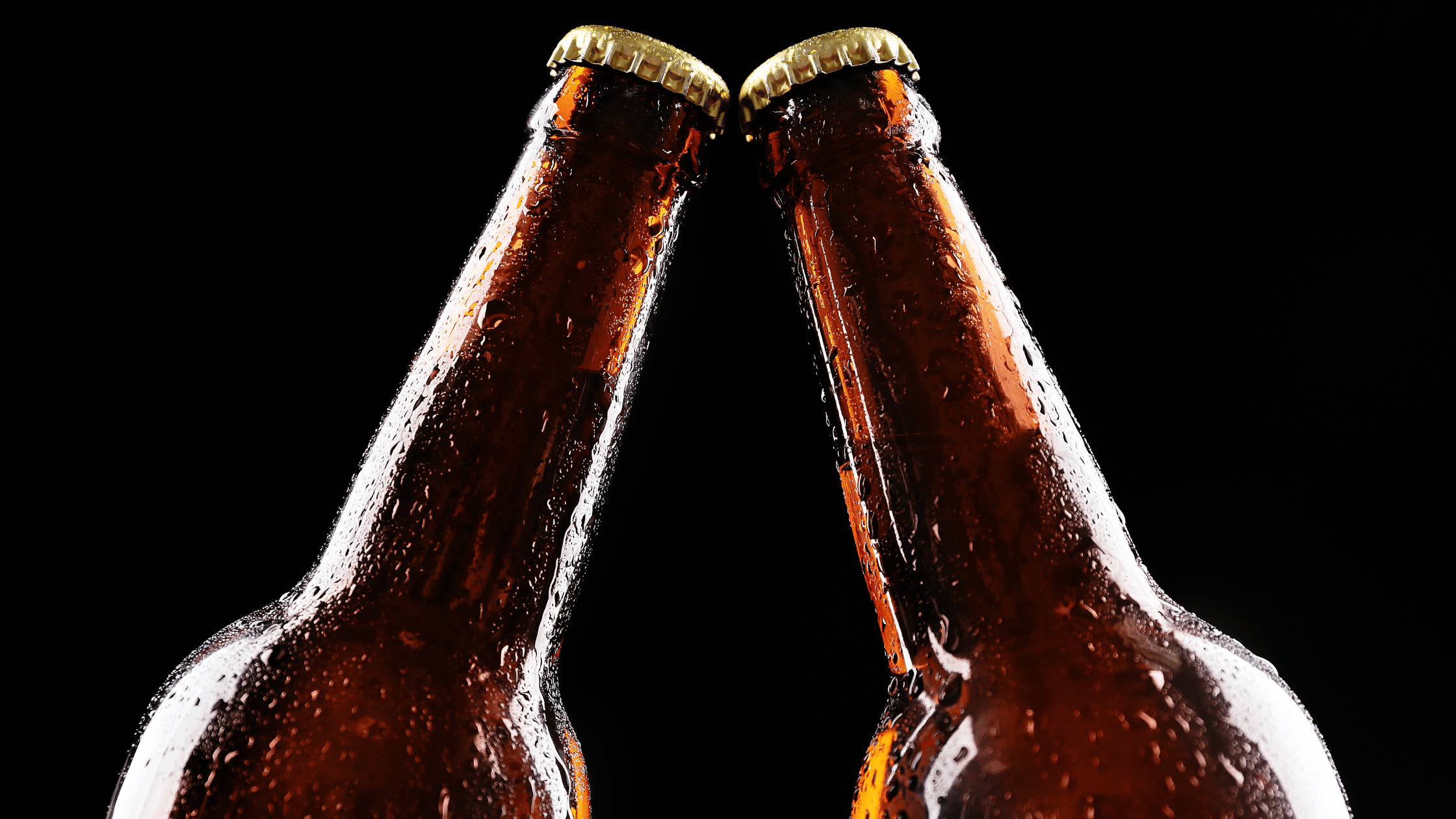
Durability
Thanks to their chemical composition and physical properties, glass bottles are durable and much more resistant to dents and punctures than beer cans. This means that they keep their shape better during transport and handling, and are less susceptible to surface damage, when compared to cans.
Surface damage can affect functionality, compromise the aesthetic of cans and, in extreme cases, weaken the seal or coating inside.
Storage
One of beer’s worst enemies is sunlight, and this plays a big role in how it should be stored. When beer is exposed to too much light, the hop compounds can break down and react with the proteins – resulting in that unpleasant “skunky” flavour.
While the colour of a can has no bearing on the flavour of the beer inside, the colour of glass plays a big role in its taste. Basically, the specific colour of the glass determines how much sunlight reaches the drink. Coloured glass (brown or green) is the best for filtering UV rays, whereas clear bottles offer less protection. Amber bottles can block up to 99.9% of UV rays, which is why they’re one of the most popular choices for protecting your brew.
While cans can also shield beer from sunlight, bottles have the upper hand when it comes to long-term storage and preventing oxidation. When sealed properly and stored under the right conditions, bottles form a natural barrier that stops oxygen from interacting with your beer, which can make it go stale. On the flip side, beer cans tend to oxidise when they’re stored upside down, shaken around too much, or stored in places that are too warm.

Experience
Beyond the question of beer taste in bottles vs. cans, glass is the go-to for anyone looking for a unique experience.
Bottles are worlds apart from cans when it comes to mouthfeel, particularly the traditional glass-to-lips experience. Imagine you are grabbing a beer from the fridge, popping the cap off and listening to the foam fizz through the neck before toasting your friend with a customary ‘clink’ – it’s a classic that can’t be recreated with a can.
Also, it’s important to remember that most of what we taste comes from what we smell. With cans, the scent of the metal can get in the way and distract you from the beer’s true flavour. Glass, on the other hand, is completely neutral, so it lets you fully savour the aroma of the brew.
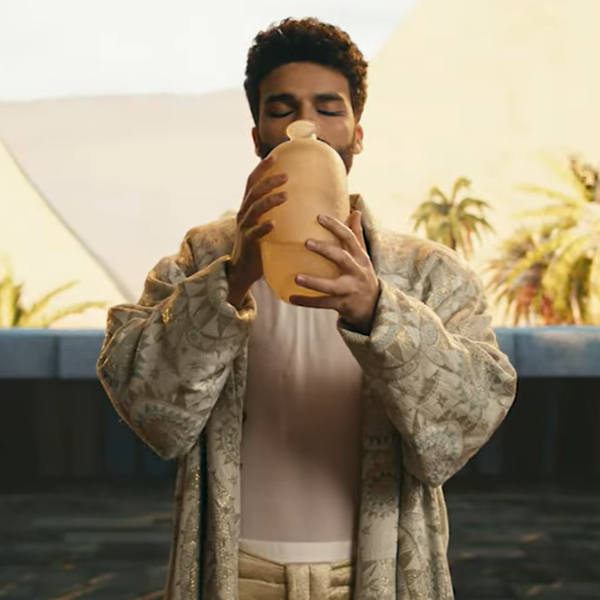
Historical value
Humans have been brewing and packaging beer for thousands of years. Over time, the designs of bottles have become more than just containers – they’ve turned into collectibles. They reflect unique cultures and traditions, which are now part of our common heritage.
From the brightly coloured enamelling of the Islamic Golden Age to the filigree ornaments of the Renaissance, each bottle tells a story – not just of the beer, but of the people who made it. Cans, on the other hand, don’t make great keepsakes – because they get dented and scratched over time, ruining their design.
Beer buffs around the world collect antique bottles as a way to celebrate the heritage of beermaking and keep a piece of its remarkable history for themselves. Many enthusiasts also enjoy rifling through antique stores, estate sales, auctions and online marketplaces to find the most niche beer bottles.
Aesthetics
What’s the first thing that comes to mind when you think of your favourite beer? The taste? The aroma? While those are important, more often than not, it’s the packaging that sticks in your mind. And chances are, you picture a bottle before a can.
Much of this comes down to style and aesthetics. That’s why many beer lovers also enjoy collecting bottles, thanks to their eye-catching designs and labels. This visual appeal is hard to match in cans, especially because they don’t hold their shape as well as bottles.
So, whether you’re deciding on your drink of choice for a dinner party or picking up a gift for your nearest and dearest, glass has an elevated aesthetic which makes it the perfect choice for any occasion.
What about plastic: why doesn’t beer come in plastic bottles?
The main reason beer is packaged in cans and bottles, rather than plastic, is due to carbonation. Beer loses its fizz faster in plastic, because the carbon dioxide (the bubbles we all love) can escape more easily than it would from bottles or cans.
Another reason why beer doesn’t come in plastic bottles is safety. Plastic packaging has been shown to release chemicals into drinks, especially when they’re stored in warm conditions, as heat speeds up the breakdown of plastic. This allows tiny particles to leach into beers and other drinks — and some of these microplastics have even been found in the human body.
Final Thoughts: Is One Really Better Than the Other?
As you’ve seen, packaging beer in bottles or cans makes a big difference in how it tastes. But, with glass, you don’t need to worry – because it protects your drink from sunlight, reduces oxygenation and makes sure that it keeps that lovely fizz until it reaches you.
As glass doesn’t need any plastic lining, it doesn’t interact with your beer, nor does it give you that ‘tinny’ aftertaste that cans often do. Beyond taste, drinking beer from the bottle is also a classic aesthetic experience that can’t be replaced by a can – from the satisfying ‘pop’ of the cap to the quiet fizzing of the foam as it tips down the neck, not forgetting the customary ‘clink’ of a cheers with a loved one.
So when it comes to beer, the choice is clear — there’s nothing like glass.
Related posts
